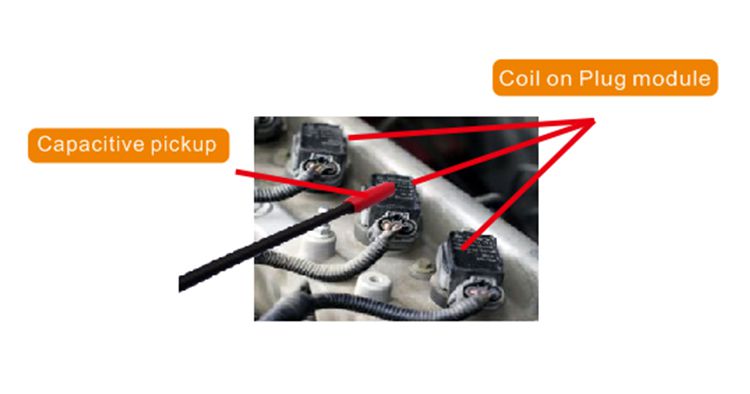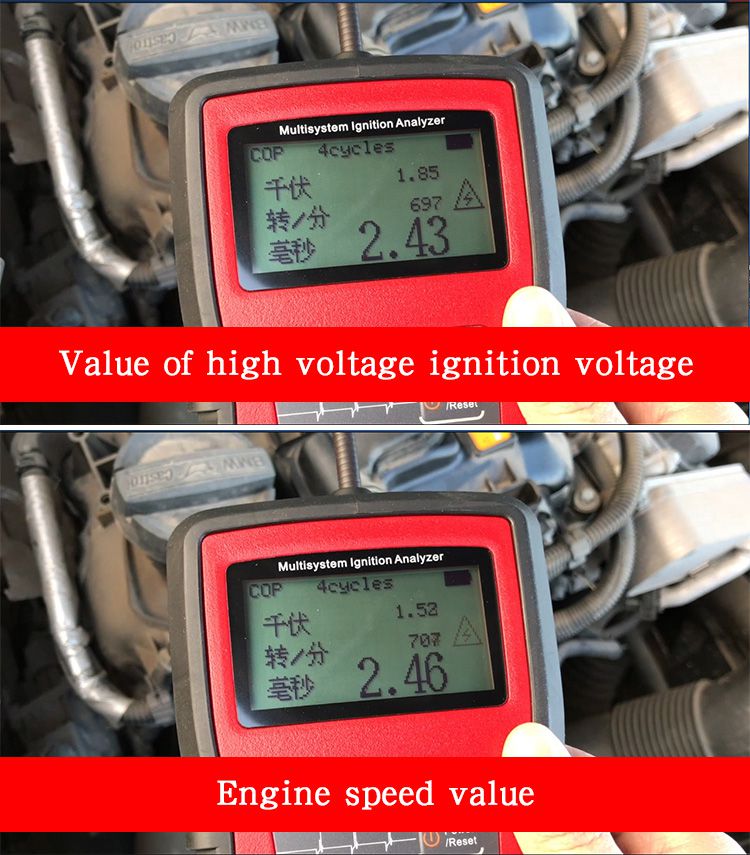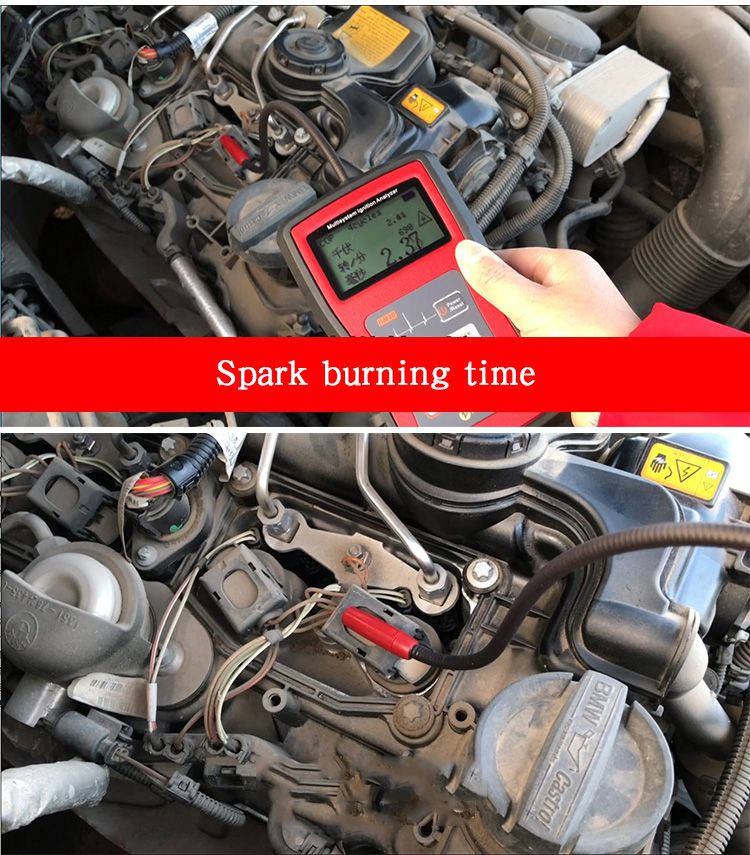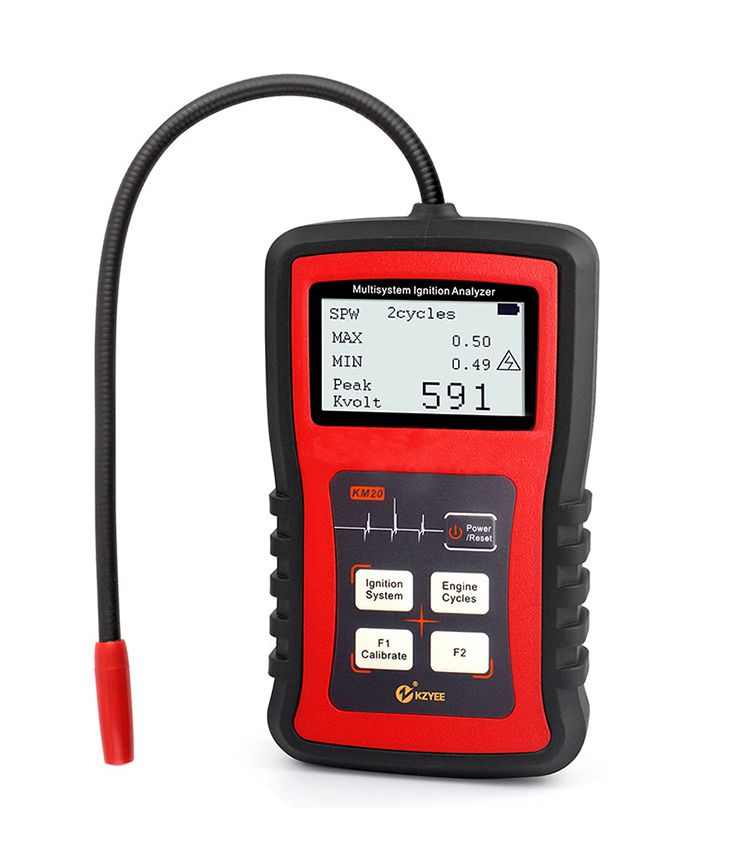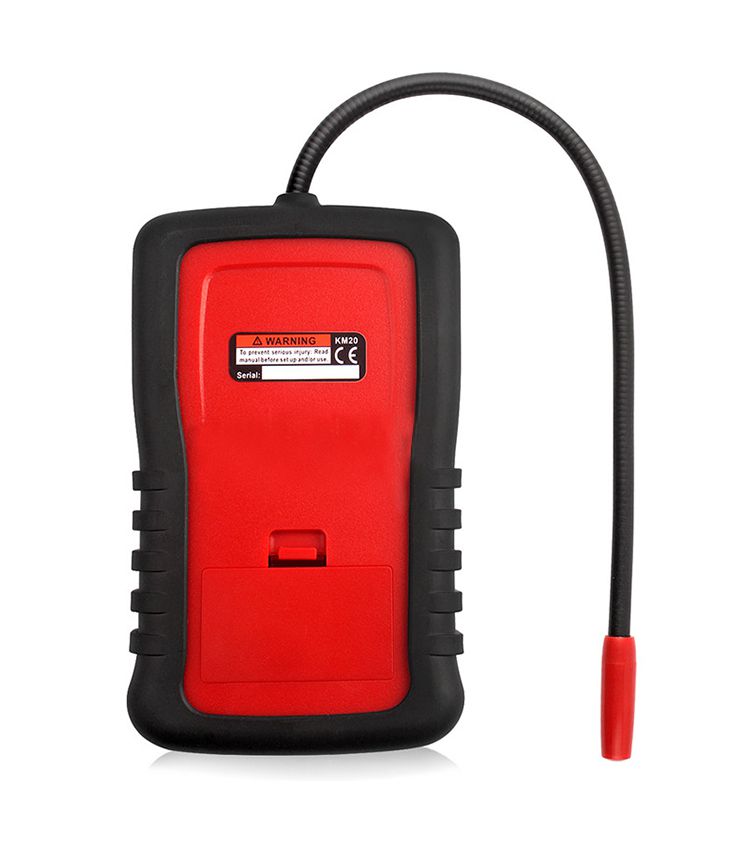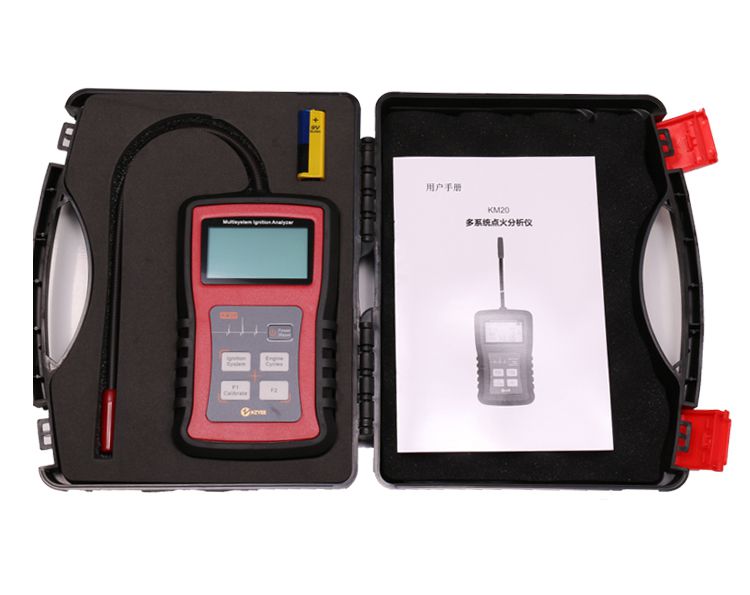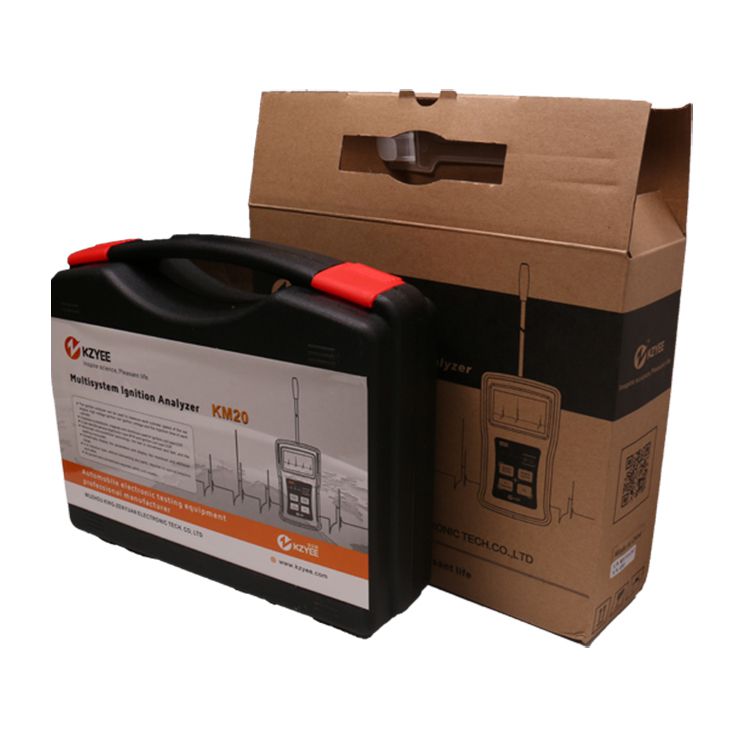Ignition Analyzer Tester
The ignition analyzer is used to measure engine cylinder speed, ignition voltage of high-voltage ignition coil and injection time of each cylinder. Wholesale Ignition Analyzer Tester
KM20 Multi-system Ignition Analyzer Tester Measure RPM Spark Volt Spark Burn Time Car Spark Plug Tester Spark System Chec is a one of our Ignition Analyzer Tester Tools, you can buy KM20 Multi-system Ignition Analyzer Tester Measure RPM Spark Volt Spark Burn Time Car Spark Plug Tester Spark System Chec from foxwellpro.com.
Wholesale Top quality VAS6154, GM Tech2, VCM II For Ford, Handy Baby II Car Key Chip Copier, CDP DS150
images of KM20 Multi-system Ignition Analyzer Tester Measure RPM Spark Volt Spark Burn Time Car Spark Plug Tester Spark System Chec
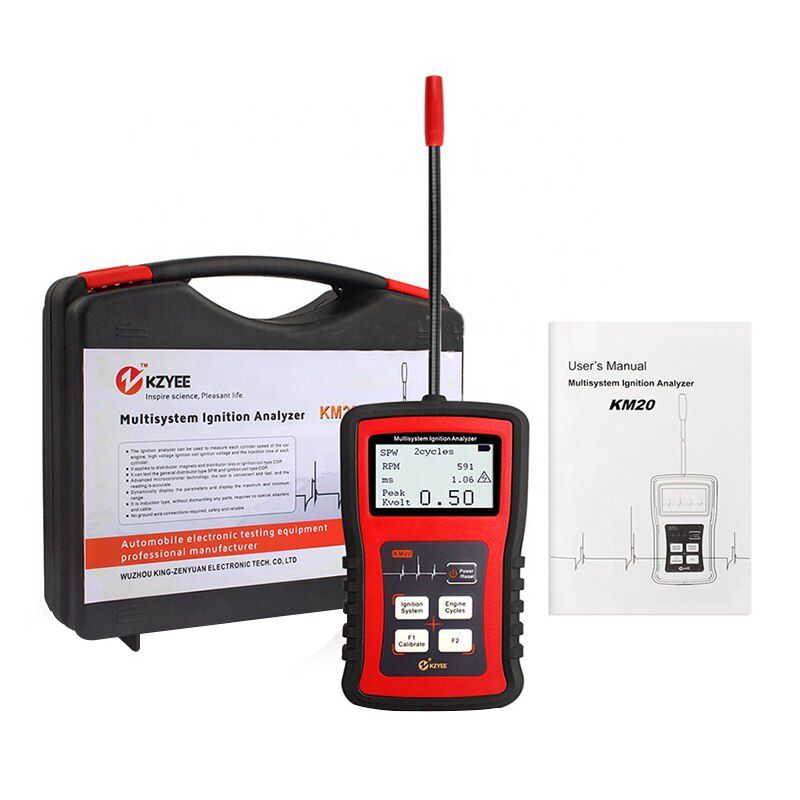
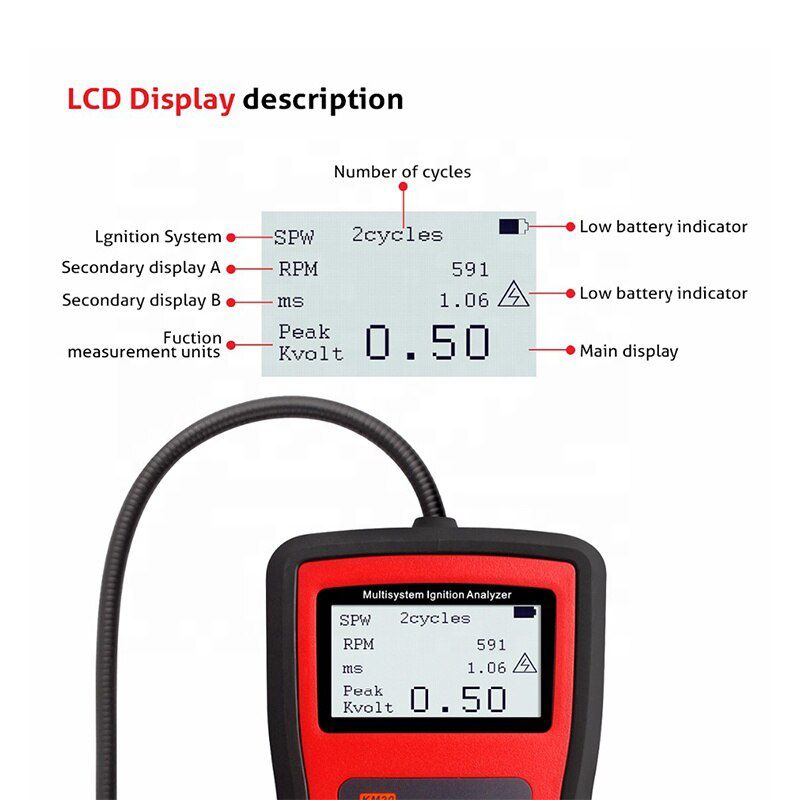
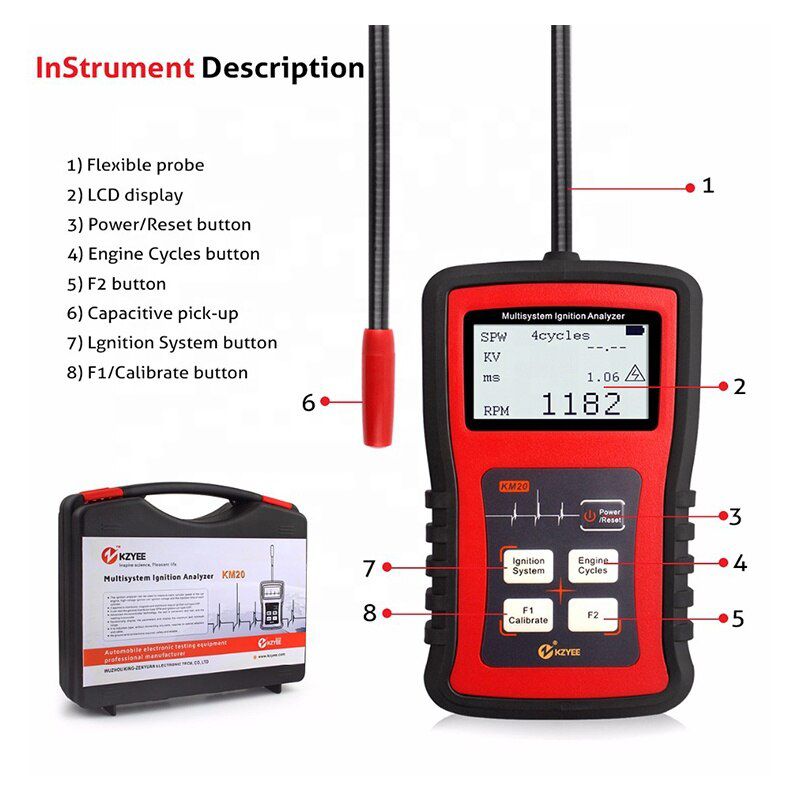

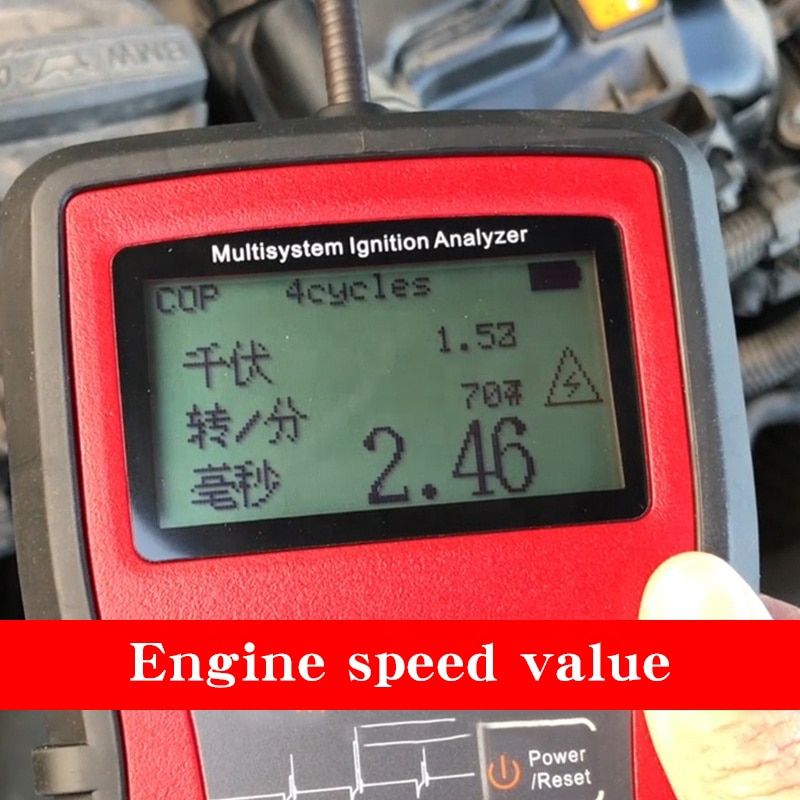
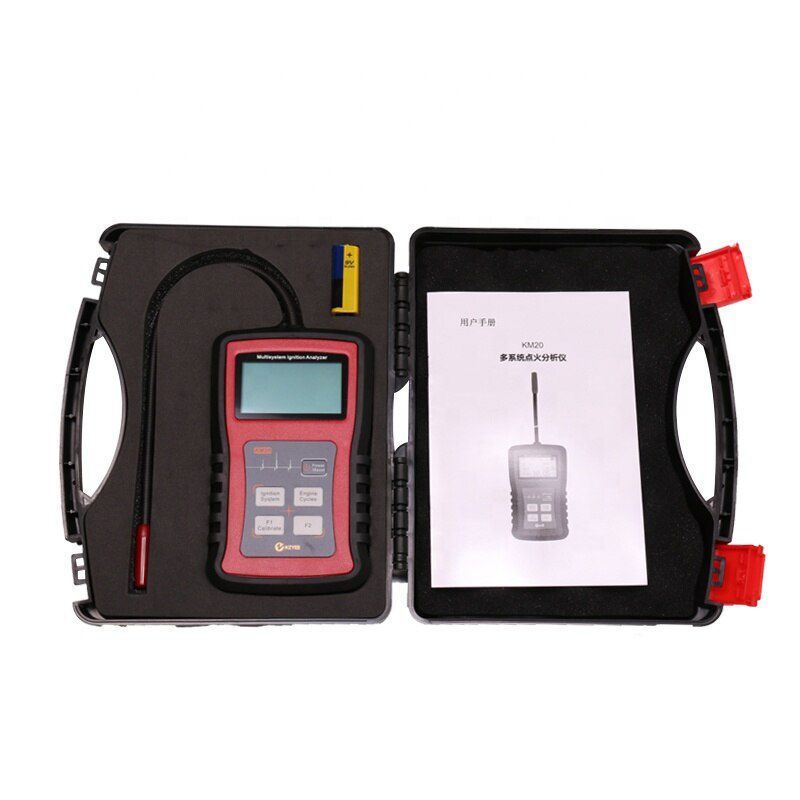

Matters needing attention of KM20 ignition analyzer
The high voltage value measured by this product is approximate, because it is detected by the principle of capacitance induction, and is related to the direction and distance of the ignition coil, and the thickness of the plastic shell of the ignition coil, so the function used for 4 ignition coil voltage comparison is very useful, car models may not show the same voltage, this is normal!
Product features
The ignition analyzer is used to measure engine cylinder speed, ignition voltage of high-voltage ignition coil and injection time of each cylinder. It is suitable for distributor, Magneto and COP system without distributor or high-voltage package. The instrument is inductive, easy to use, does not need to disassemble any parts, does not need a special adapter, cable or scope to diagnose all types of ignition system problems. Can test the general distributor type SPW and high-voltage packet type COP. Can dynamically display the parameters, and display a range of size values.
1,measurement of rotational speed
2,measurement of ignition voltage
3,measurement of combustion time
4,advanced microcontroller technology
5,NO ground connection required
| function | measuring range | Accuracy / regression accuracy | input characteristics |
| speed | 200 to 1999 RPM 2 and 4 cycles and DIS | Accuracy:0.5%±1 LSD | Input impedance:100KΩ1.5nF minimum Input Protection:±42VDC Maximum |
| Spark KV | 0 ~ 50 kV | Regression accuracy:3%±1 LSD | |
| Spark burning time | 0 ~ 10 ms | Accuracy:±0.1ms |
| size of product | |
| display screen | LCD 128*64 digital screen |
| refresh rate | 3 times per second (LCD) |
| Ignition system elements | Plug coil, plug near coil, DIS conventional magnetoelectric machine |
| cycle of engine | 2 and 4 cycles and DIS (no distributor ignition system) |
| source | 9V battery |
| auto shut off | 3 minutes no operation automatic shutdown |
| Battery life | Approximately 20 hours (alkaline battery) |
| Probe length | 35cm, including capacitive sensors |
| size | 165*100*32mm not including antenna |
| weight | Approximately 0.363kg (including batteries) |
| Accessories attached | Hard cushioned suitcase, user's manual, rubber leather case and 1*9 volt alkaline battery |

| 1 | Flexible probe | 5 | F2 button |
| 2 | LCD dispiay | 6 | Capacitive pick-up |
| 3 | Power/Reset button | 7 | Lgnition System button |
| 4 | Engine Cycles button | 8 | F1/Calibrate button |

| 1 | Number of cycles | 5 | Fuction measurement units |
| 2 | Lgnition System | 6 | Low battery indicator |
| 3 | Secondary display A | 7 | Low battery indicator |
| 4 | Secondary display B | 8 | Main display |
Measurement: 1,Select ignition system measurement
2,observe the spark burning time of the display and the spark kv reading. Some of the changes in readings are normal, reflecting the actual change in spark voltage and burning time in the ignition system .
3,Record or remember the maximum, minimum, and average readings. Repeat each spark plug or ignition module of the engine, noting any readings that are significantly above or below average .
4,Ignition problems sometimes occur at higher engine speeds, but not at low or idle speeds. we recommend measuring at idle and normal engine operating temperatures before increasing the rotational speed until equivalent to high speed, typically about 2000–2500 rpm. Do not exceed the maximum allowable value of engine speed (red line). all measurements are performed in approximately the same engine speed, using the tachometer function of this instrument to check the rotational speed.
Diagnosis using spark burning time and spark kV readings :the small change in spark burning time and spark kv reading between different cylinders is normal and not necessarily problematic. For diagnostic purposes, attention should be paid to distinct readings caused by engine or ignition system problems.
Important tip: 1,The instrument shows that the RPM and spark burning time are absolute measurements.
2,Spark KV is a relative measure and should be used only for ignition modules in the same engine or comparison between spark plug lines.
3,in cop mode, before performing measurements and comparing results between cylinders, such as the spark kv calibration of one of the ignition modules as described in "measuring the plug coil and the coil ignition system near the plug ".
4,When measuring the spark plug line, the capacitance sensor placed in different locations of the spark plug will also cause the reading to be different (SPW mode) because of the internal resistance of the spark plug line. For example, if the capacitive sensor is placed on the spark plug line near the splitter or DIS coil, the voltage reading will be higher than the reading placed near the spark plug.
Common reasons for long readings of burning time
1,Short-circuited, defaced, or spark plug gap too small .
2,Dirty or damaged spark plug insulators allow sparks to "trace" through the insulator.
3,Thick mixture, probably due to fuel injector leaks, or faulty oxygen sensors.
4,Lower cylinder compression pressure, possibly by leakage valves, worn piston rings, burst Cylinder pads, etc.
Common reasons for burning time reading too short
1,floral fire plugs are worn or the gap is too wide.
2,Spark plug connector damaged, loosened or disconnected .
3,The main circuit resistance of ignition coil is too large .
4,weak mixture .
Common cause of low spark volt readings
1,Short circuit, dirty or spark plug gap is too small .
2,Dirty or damaged spark plug insulators allow sparks to'track' through insulators .
3,The spark plug core is broken. The breakage is located between the distributor (or DIS coil) and the test point.
4,Shorting, disconnecting or partially disconnecting between the distributor (or DIS coil) and the spark plug .
5,Thick mixture, probably due to fuel injector leaks, or faulty oxygen sensors .
6,Lower cylinder compression pressure may be caused by leakage valves, worn piston rings, burst cylinder pads, etc.
Common cause of high spark volt readings
1,Spark plugs are worn or gaps are too wide .
2,Spark plug connector damaged, loosened or disconnected .
3,The core of the spark plug line is broken and located between the spark plug and the test point .
4,weak mixture
Measuring the ignition system of the coil near the plug coil and plug
1,Turn on the instrument
2,If in COP mode, press "lgnitionsystem" to select
3,Select the number of cycles in the test engine by repeatedly pressing the "engine cycles" button until the display displays the correct settings.
4,Select Measurement Shown on Main Display: RPM Spark Burning Time or Spark KV
5,Select mode as auxiliary display: minimum and maximum for main display or complementary measurement
6,Place the capacitive sensor on one of the ignition modules, as shown in the figure for search generation The position of the reading of a steady speed or spark burning time
7,If this is the first engine measurement, first calibrate the Spark KV measurement, as this calibration value will be used as a reference value to compare the spark KV reading between the plug coil or the coil module near the plug
8,The capacitive sensor is placed on the ignition module to read and display the measured values
